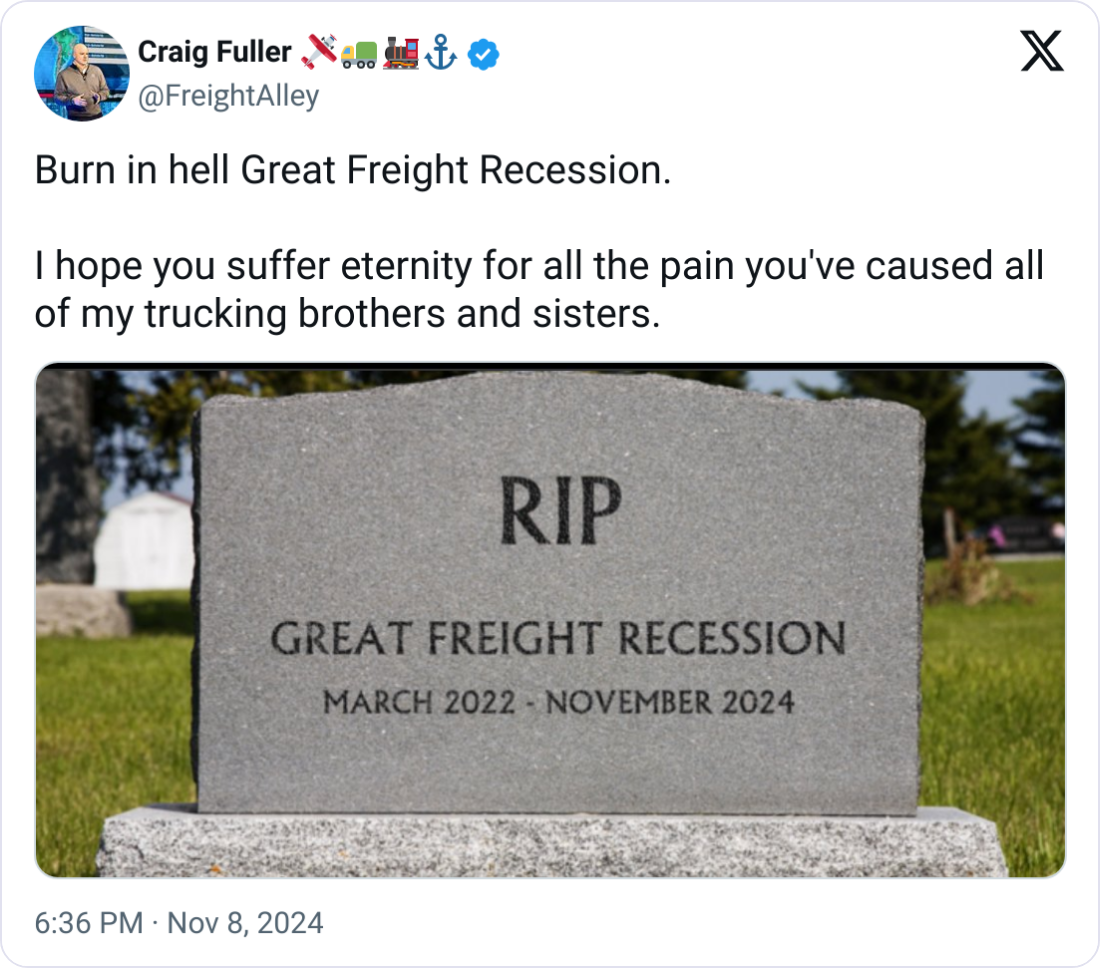The Productivity Trap: Why Operators Are Burning Out Faster and How Smarter Brokerages Are Fighting Back
How freight brokerages can reduce operator burnout, improve productivity, and use AI and secure automation to streamline workflows in 2026.
FreightWaves contributor Adam Wingfield argues that trucking remains in a “Great Trucking Recession,” with suppressed rates, bankruptcies, and structural challenges hitting small carriers harder than 2008.

According to a new FreightWaves analysis by Innovative Logistics Group's Adam Wingfield, the current downturn meets every definition of a true “Great Trucking Recession” — and for many small carriers, it may already be worse than the collapse of 2008.
Wingfield writes that operators don’t need SONAR data to recognize the downturn. They feel it in mounting deadhead miles, sub-$2 spot rates, and truck payments that no longer align with shrinking margins.
FreightWaves points to SONAR’s National Truckload Index (NTI), which has fallen from above $3.00/mile during the pandemic peak to roughly $2.27/mile today. Tender rejections hover near 5%, a classic oversupply signal, while bankruptcies and truck repossessions continue to climb.
The analysis highlights how the COVID freight surge set the stage for today’s contraction. Carriers expanded aggressively as spot rates soared, and new authorities surged at record pace. Many of those entrants were inexperienced operators, while the influx of non-domiciled CDL holders further reshaped the labor market.
When volumes normalized in 2022, capacity far outpaced available freight. Elevated insurance, fuel, and equipment costs left carriers exposed, turning what might have been a cycle reset into a prolonged contraction.
FreightWaves argues this cycle is different from past recessions. The downturn is compounded by:
This, Wingfield notes, means carriers can’t simply “out-hustle” the market as they might have in past cycles.
The latest FreightWaves commentary stands in contrast to earlier optimism. In late 2024, FreightWaves CEO Craig Fuller declared the end of the “Great Freight Recession,” citing rising tender rejections, higher spot rates, and regulatory changes that threatened to tighten capacity.

At that time, conditions suggested recovery was underway. Yet nearly a year later, with rates still suppressed and bankruptcies accelerating, Wingfield’s assessment is that the recession never truly ended — it merely shifted into a slower, more grinding phase.
FreightWaves concludes that trucking is still in the grips of a multi-year correction. The downturn is forcing carriers to rethink operations, with survival hinging on cost discipline, direct shipper relationships, and leaner business models.
Whether this period ultimately proves deeper than 2008 remains to be seen. But for smaller fleets, FreightWaves suggests it may already be more painful.
Source: FreightWaves 1 | 2
Join over 14K+ subscribers to get the latest freight news and entertainment directly in your inbox for free. Subscribe & be sure to check your inbox to confirm (and your spam folder just in case).